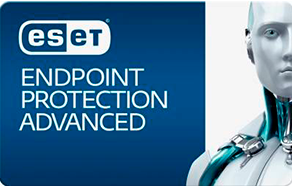

Read more about this type of protection in the glossary.Įnable Exploit Blocker – designed to fortify commonly exploited application types such as web browsers, PDF readers, email clients and MS Office components. Advanced memory scanner is enabled by default. This option is available in Windows 8.1 and Windows 10.Įnable Advanced memory scanner – works in combination with Exploit Blocker to strengthen protection against malware that has been designed to evade detection by antimalware products through the use of obfuscation or encryption. When enabled, the service is started as a protected Windows process to defend attacks by malware. ESET Management Agent is protected as well when installed.Įnable Protected Service – enables protection for ESET Service (ekrn.exe). Self-defense protects crucial system and ESET's processes, registry keys and files from being tampered with. Turning off HIPS will disable rest of the HIPS features like Exploit Blocker.Įnable Self-Defense – ESET Endpoint Antivirus uses the built-in Self-defense technology as a part of HIPS to prevent malicious software from corrupting or disabling your antivirus and antispyware protection. The HIPS state (enabled/disabled) is shown in the ESET Endpoint Antivirus main program window, in the Setup > Computer.Įnable HIPS – HIPS is enabled by default in ESET Endpoint Antivirus. HIPS settings can be found in Advanced setup (F5) > Detection engine > HIPS > Basic. HIPS is separate from Real-time file system protection and is not a firewall it only monitors processes running within the operating system. HIPS utilizes advanced behavioral analysis coupled with the detection capabilities of network filtering to monitor running processes, files and registry keys. The Host-based Intrusion Prevention System (HIPS) protects your system from malware and unwanted activity attempting to negatively affect your computer.

Incorrect configuration of HIPS settings can lead to system instability. Changes to HIPS settings should only be made by an experienced user.


 0 kommentar(er)
0 kommentar(er)
